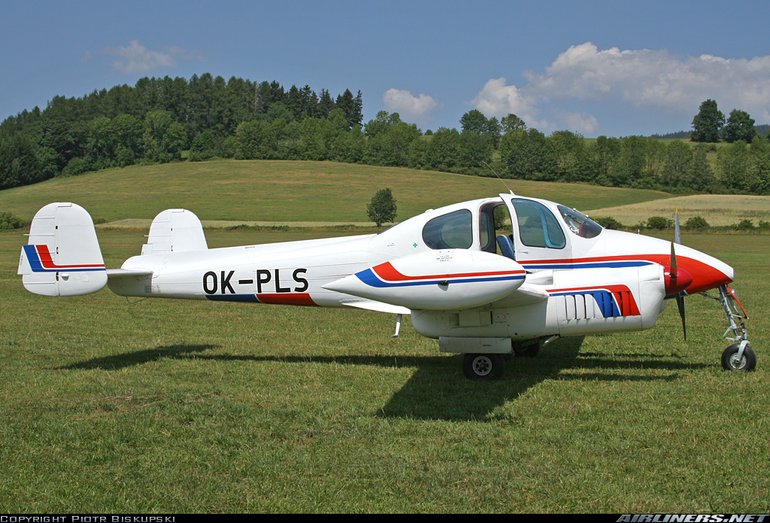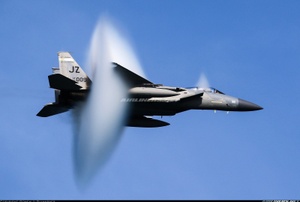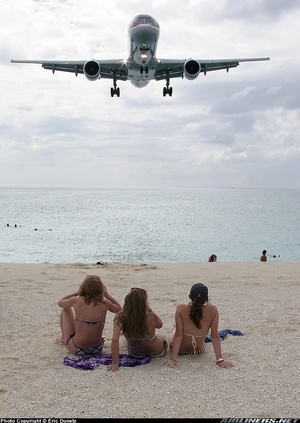Let L-200 Morava
Details
Country of Origin
Czech Republic
Type
Four/five seat light twin
History
The Let L-200 Morava retractable four seat light twin was one of the few light aircraft to be exported from behind the Iron Curtain during the Cold War era, albeit in small numbers.
Ladislav Smrek of the Czechoslovakian State Aircraft Factory designed the L-200 in the mid 1950s to develop a replacement for the early postwar vintage Aero 45 and 145 light twins. His resulting design is similar in many ways to its contemporary western twins, with a four or five place cabin, a low wing, wingtip tanks, metal construction and retractable undercarriage. However the Morava is distinguishable by its twin tails, standard thermal wing deicing equipment and inverted inline engines.
The prototype XL-200 Morava flew for the first time on April 8 1957. The XL-200 prototype and a series of preproduction L-200s were powered by 120kW (160hp) Walter Minor 6-III inline sixes. Initial production was of the L-200A, which differed from the L-200 in being powered by two 155kW (210hp) fuel injected M-337s, and had greater weights, a reprofiled cabin and hydraulically (rather than electrically) operated undercarriage and flaps.
Let built 160 L-200As before production switched to the improved L-200D. Features include a strengthened undercarriage, improved hydraulic and electrical systems and constant speed three blade propellers. The L-200D remained in production until 1969, and 5 aircraft were licence built in Slovenia (then part of Yugoslavia) by Libis. A turboprop powered development was studied but not built.
Most L-200 production was for customers within the Soviet Bloc - Aeroflot for example operated a large number in a range of roles including air taxi, air ambulance and communications duties. However small numbers were exported to western Europe, the USA and other Western countries.
Powerplants
L-200A - Two 155kW (210hp) Walter Minor M-337 fuel injected inverted inline piston engines driving two blade variable pitch propellers.
L-200D - Same except three blade constant speed props.
Performance
L-200A - Max speed 305km/h (165kt), max cruising speed 293km/h (158kt), long range cruising speed 256km/h (138kt). Initial rate of climb 1150ft/min. Service ceiling 20,340ft. Range with max fuel 1770km (955nm).
L-200D - Max speed 290km/h (157kt), max cruising speed 282km/h (152kt), long range cruising speed 256km/h (138kt). Initial rate of climb 1260ft/min. Service ceiling 18,700ft. Range with max fuel 1710km (923kt).
Weights
L-200A - Empty 1275kg (2810lb), max takeoff 1950kg (4300lb).
L-200D - Empty 1330kg (2932lb), max takeoff 1950kg (4300lb).
Dimensions
Wing span 12.31m (40ft 5in), length 8.61m (28ft 3in), height 2.25m (7ft 4in). Wing area 17.3m2 (186sq ft).
Capacity
Typical accommodation for four or five, with pilot and passenger in individual seats and two or three passengers on rear bench seat.
Production
Total L-200 production 374, including 2 XL-200 prototypes, 10 L-200 preproduction aircraft, 160 L-200A, 197 L-200D plus 5 L-200D produced by Libis.
Related Links
Let L-200 Morava
The backbone of this section is from the The
International Directory of Civil Aircraft by Gerard Frawley
and used with permission. To get your own copy of the book
click here.



















